Itinerary edited by UNIVERSITY OF CAGLIARI 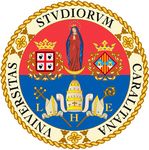

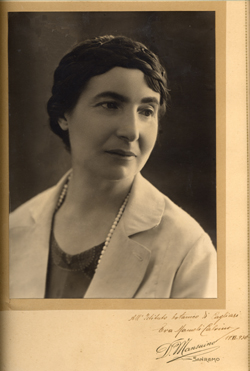
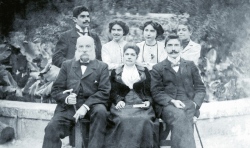 Eva Mameli-Calvino was born in Sassari on 12th February 1886. She was the fourth daughter of the Colonel of the Carabinieri Corps Giovanni Mameli and Maria Maddalena Cubeddu (née Mameli). They were a very close family and the children were educated according to principles such as the value of knowledge and the importance of a full commitment to one’s life and work. Eva Mameli-Calvino shared her early interest in nature with her favourite brother, Efisio. She was the first and only woman to attend the then Technical and Nautical High School Pietro Martini. In 1903, she graduated from high school, having followed a special mathematics and physics track.
Eva Mameli-Calvino was born in Sassari on 12th February 1886. She was the fourth daughter of the Colonel of the Carabinieri Corps Giovanni Mameli and Maria Maddalena Cubeddu (née Mameli). They were a very close family and the children were educated according to principles such as the value of knowledge and the importance of a full commitment to one’s life and work. Eva Mameli-Calvino shared her early interest in nature with her favourite brother, Efisio. She was the first and only woman to attend the then Technical and Nautical High School Pietro Martini. In 1903, she graduated from high school, having followed a special mathematics and physics track.
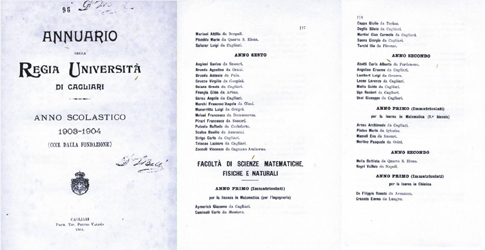 During the academic year 1903-1904, she enrolled in a two-year university course in mathematics and graduated in 1905, as the records of the University of Cagliari show. She subsequently began a degree in natural sciences at the same university, but completed it at the University of Pavia in 1907, where she and her mother moved after her father’s death. Her brother Efisio Mameli worked at the same university as Professor of Chemistry and Eva Mameli-Calvino soon started her scientific career in the Cryptogamic Laboratory.
During the academic year 1903-1904, she enrolled in a two-year university course in mathematics and graduated in 1905, as the records of the University of Cagliari show. She subsequently began a degree in natural sciences at the same university, but completed it at the University of Pavia in 1907, where she and her mother moved after her father’s death. Her brother Efisio Mameli worked at the same university as Professor of Chemistry and Eva Mameli-Calvino soon started her scientific career in the Cryptogamic Laboratory.
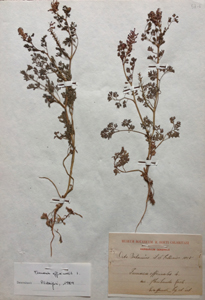 Her profound interest in botany led her to do extensive research on several species of genus Fumaria, which she examined at the Botanical Garden in Cagliari. Of the many specimens she collected and categorised, 11 are still part of the collection
Her profound interest in botany led her to do extensive research on several species of genus Fumaria, which she examined at the Botanical Garden in Cagliari. Of the many specimens she collected and categorised, 11 are still part of the collection 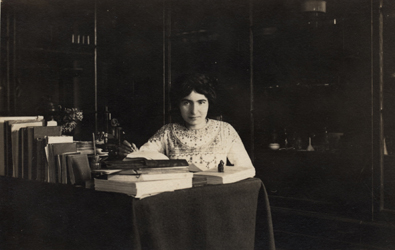 of the Herbarium Museum in Cagliari (CAG). All these specimens are still in excellent condition, and are accompanied by all the essential analytical information reported on file cards that Mameli-Calvino duly signed. Some cards also include detailed handwritten notes, as can also be seen in some specimens of Fumaria spp. The Herbarium also hosts some exsiccata (also part of the genus Fumaria) that were “collected and categoried (Legit et Determinavit) by Dina Pisano, who also held a degree in natural sciences. These samples also feature Mameli-Calvino’s comments and observations, and Mameli-Calvino drew on them for her first published study in 1906. Mameli-Calvino continued working on scientific research, as demonstrated by her extensive work in various fields, such as mycology and lichenology.
of the Herbarium Museum in Cagliari (CAG). All these specimens are still in excellent condition, and are accompanied by all the essential analytical information reported on file cards that Mameli-Calvino duly signed. Some cards also include detailed handwritten notes, as can also be seen in some specimens of Fumaria spp. The Herbarium also hosts some exsiccata (also part of the genus Fumaria) that were “collected and categoried (Legit et Determinavit) by Dina Pisano, who also held a degree in natural sciences. These samples also feature Mameli-Calvino’s comments and observations, and Mameli-Calvino drew on them for her first published study in 1906. Mameli-Calvino continued working on scientific research, as demonstrated by her extensive work in various fields, such as mycology and lichenology.
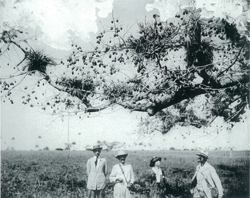 Mameli-Calvino also studied reproductive biology, the complex physiology of plants and their biochemistry, and conducted experiments on their use in agriculture. She also carried out several studies on Sardinian mycology and lichenology (cf. for instance her 1908 work titled Sulla flora micologica della Sardegna and her 1919 study Licheni della Sardegna). Mameli-Calvino carried out experiments on the genetics of plants, their hybridisation and various pathologies. In 1915 she was the first Italian woman to obtain a teaching certification in botany.
Mameli-Calvino also studied reproductive biology, the complex physiology of plants and their biochemistry, and conducted experiments on their use in agriculture. She also carried out several studies on Sardinian mycology and lichenology (cf. for instance her 1908 work titled Sulla flora micologica della Sardegna and her 1919 study Licheni della Sardegna). Mameli-Calvino carried out experiments on the genetics of plants, their hybridisation and various pathologies. In 1915 she was the first Italian woman to obtain a teaching certification in botany.
 In 1920, she married Mario Calvino, an agronomist, and they moved to Havana (Cuba) where her husband was the Head of the Botany Department of the Agricultural Experiment Station (Estaciòn Experimental Agronòmica) in Santiago de las Vegas. The scientific application of Sardinian botany to Cuba revolved mainly around the issues linked to the industrial production of sugar cane. Additionally, Mameli-Calvino actively promoted the agrarian schooling of the settlers’ children as well as female education. In 1923, while still in Cuba, Eva Mameli-Calvino gave birth to their first child, Italo Calvino, who became one of the best-known Italian writers of the 20th century.
In 1920, she married Mario Calvino, an agronomist, and they moved to Havana (Cuba) where her husband was the Head of the Botany Department of the Agricultural Experiment Station (Estaciòn Experimental Agronòmica) in Santiago de las Vegas. The scientific application of Sardinian botany to Cuba revolved mainly around the issues linked to the industrial production of sugar cane. Additionally, Mameli-Calvino actively promoted the agrarian schooling of the settlers’ children as well as female education. In 1923, while still in Cuba, Eva Mameli-Calvino gave birth to their first child, Italo Calvino, who became one of the best-known Italian writers of the 20th century.
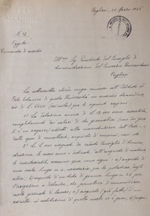
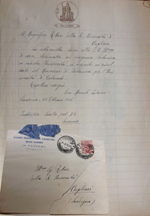 In 1925, Mameli-Calvino and her family returned to Italy where she obtained the chair of Botany at the University of Cagliari. From 1926 to 1929, she also became the Director of the Botanical Garden in the same city. Between 1926 and 1928, she introduced several species; among the many that took roots in the Garden, it is still possible to find the following: Brahea roezlii Hort., Cycas revoluta Thunb. and Nolina longifolia Hemsl.
In 1925, Mameli-Calvino and her family returned to Italy where she obtained the chair of Botany at the University of Cagliari. From 1926 to 1929, she also became the Director of the Botanical Garden in the same city. Between 1926 and 1928, she introduced several species; among the many that took roots in the Garden, it is still possible to find the following: Brahea roezlii Hort., Cycas revoluta Thunb. and Nolina longifolia Hemsl.
Her second child, Floriano, was born while Mameli-Calvino was working in Cagliari and became a geologist. During his academic career, Floriano carried out geomorphological analyses of several Sardinian areas and dedicated his petrographic studies and works to Karst phenomena in Sarrabus and Gerrei on the island where his mother was born.

Mameli-Calvino later moved to Sanremo and joined her husband at the Experimental Station of Floriculture “Orazio Raimondo”, where they both continued working. In the 1950s she became director of the same station. She died in Sanremo in 1978, aged 92. Her impressive career attests to her commitment to scientific research.
1886 Eva Mameli-Calvino was born in Sassari.
1903 She graduated from the Technical and Nautical High School Pietro Martini
1903-04 She enrolled in a two-year academic course in mathematics at the Faculty of Medicine, Physics and Natural Sciences of the University of Cagliari
1904-05 She graduated with a degree in mathematics from the University of Cagliari
1906 She published her first scientific work
1907 She received a degree in Natural Sciences from the University of Pavia
1908 She obtained a teaching certification from the University of Pavia
1910 She passed the national examination for teaching natural sciences at the secondary school level
1910 She passed another national examination and obtained fellowships to further her studies at the Faculty of Natural Sciences of the University of Pavia and at other research venues
1907-20 She was a Research Assistant in Botany at the University of Pavia
1915 She obtained a teaching certificate in General Botany at the University of Pavia
1919 She was awarded a grant in Natural Sciences by the Academia dei Lincei (the Academy of the Lynx-Eyed)
1920 She married Mario Calvino and moved to Cuba
1920 She was appointed Head of the Department of Botany of the “Estactiòn experimental agronòmica” in Santiago de la Vega (Havana, Cuba)
1923 She gave birth to her first child, Italo Calvino
1924-25 botany teacher of the "Escuela Agricola Chaparra" San Manuel (East, Cuba)
1925 She returned to Italy with her family
1925 She was appointed Professor of Botany at the University of Cagliari
1926-1929 She was appointed Director of the Botanical Garden of Cagliari
1927 She gave birth to her second child, Floriano Calvino
1930 With her husband and other collaborators, Eva Mameli-Calvino founded the Società italiana Amici dei Fiori (Italian Society of Flower Lovers)
1950 She was appointed Director of the Experimental Station of Floriculture “Orazio Raimondo”
31th March 1978 She died in Sanremo
 Cagliari
Cagliari  Pavia
Pavia  Santiago de la Vega, Havana, Cuba
Santiago de la Vega, Havana, Cuba  Sanremo
SanremoSecci M. C. (2015 ). Eva Mameli y Mario Calvino: una presencia soslayada en el México revolucionario. In Literatura Mexicana, vol. 26, n. 2, pp. 53-66.
Macellari E. (2015). Botaniche Italiane, Scienziate naturaliste appassionate. Trento, Tip. Editrice TEMI s.a.s.
Secci M. C. (2014). “Expediente Sra Eva Mameli de Calvino” utile e forestiera botanica a Cuba. In Centroamericana, vol. 24.2, pp. 77–108.
Accati E., Aresu L., Cogoni A. et al. (2013). Relazioni giornata di studio. Evelina Mameli Calvino. Sassari, A.G.I. Garden Club Sassari.
Pedrotti F. (2012). I pionieri della protezione della natura in Italia (p. 139-144). Trento, Tipografia ed. Temi s.a.s.
Accati E. (2011). Fiori in famiglia. Storie e storie di Eva Mameli Calvino. Firenze-Trieste, ed. Scienze.
Forneris P., Marchi L. (2004). Il giardino segreto dei Calvino. Immagini dall’album di famiglia tra Cuba e Sanremo. Genova, De Ferrari & Devega.
Mameli Calvino E. (1928). Index Seminum dell’Orto Botanico di Cagliari. Atti della Società fra i cultori delle Scienze Mediche e Naturali in Cagliari. XXX (III Nuova serie), pp. 103-129.
Mameli Calvino E. (1925). Elenco dei titoli e delle pubblicazioni. Perugia, Tipografia Guerriero Guerra.
Mameli Calvino E. (1906). Di alcune specie e varietà del genere Fumaria nuove per la Flora sarda. Annali di Botanica, V, pp. 77-86.